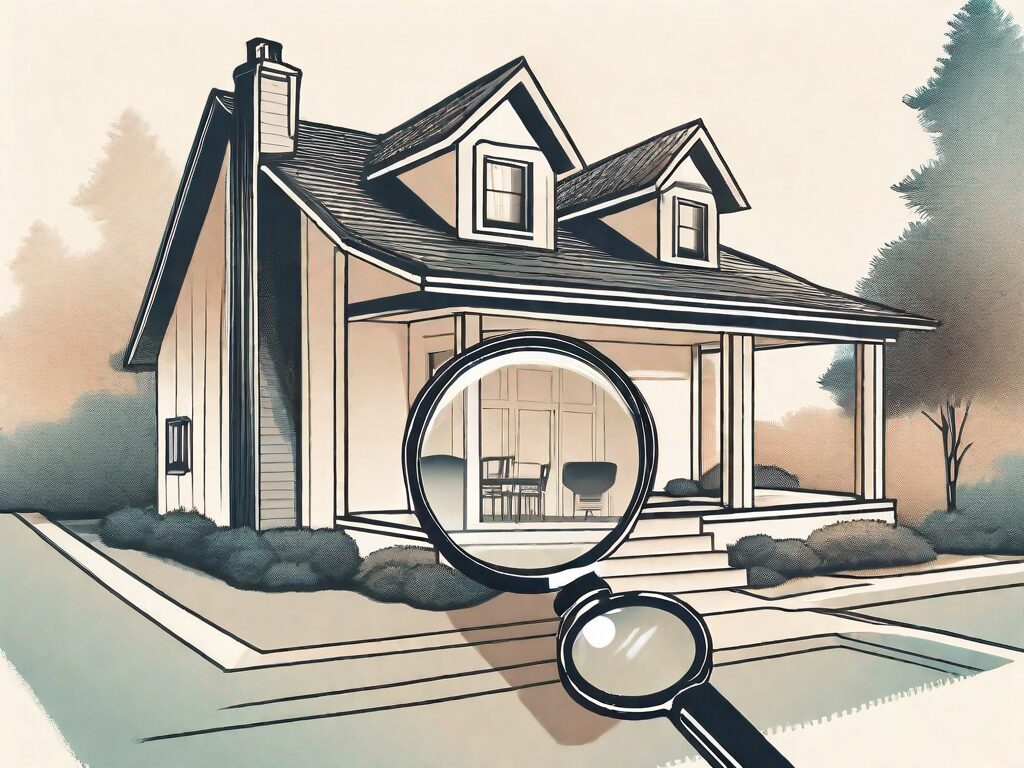
Agent A-Team or Solo Superhero? Finding the Right Real Estate Partner for Your Selling Journey in Wildwood Florida
When it comes to selling your home in Wildwood, Florida,…
January 29, 2024
Are you planning to sell your home or refinance your mortgage? If so, you’ll likely need to go through a home appraisal. Understanding the appraisal process and taking steps to prepare your home can significantly impact its value. In this complete guide, we’ll demystify the home appraisal process and provide you with expert tips to help you prepare your home for an appraisal.
A home appraisal is an unbiased evaluation of your property’s value conducted by a professional appraiser. This evaluation is based on various factors, including the condition and features of your home, recent sale prices of comparable properties in your area, and market trends. To ensure an accurate appraisal, appraisers follow a three-step process.
The first step in the home appraisal process is the inspection. During this visit, the appraiser will assess the overall condition of your home, its size, and layout. They will also take note of any upgrades, repairs, or unique features that may affect its value.
During the inspection, the appraiser will meticulously examine every aspect of your property. They will inspect the exterior, looking at the roof, siding, and landscaping. Inside, they will evaluate the condition of the walls, flooring, and fixtures. They will also take measurements to determine the accurate square footage of your home.
Furthermore, the appraiser will pay close attention to any upgrades or renovations you have made. Upgrades such as a modern kitchen, renovated bathrooms, or energy-efficient features can significantly increase the value of your home. On the other hand, any signs of deferred maintenance or structural issues may negatively impact the appraisal.
Next, the appraiser will research and evaluate comparable properties in your area. This step involves analyzing recent sales data and comparing your home to similar properties in terms of size, location, amenities, and condition.
Appraisers use a variety of resources to gather information on comparable properties. They may consult local real estate databases, review recent sales listings, and even drive around the neighborhood to observe similar homes firsthand. By comparing your property to others that have recently sold, the appraiser can determine a fair market value for your home.
It’s important to note that the appraiser will consider both the interior and exterior features of the comparable properties. They will take into account factors such as the number of bedrooms and bathrooms, the size of the lot, the presence of a garage or swimming pool, and any additional amenities that may affect the value.
Finally, the appraiser will determine the appraised value of your home based on their findings. This value is crucial for lenders, buyers, and sellers, as it directly impacts mortgage loan approvals and sale prices.
Once the appraiser has completed the inspection and compared your property to similar homes, they will analyze all the data collected. They will consider the condition of your home, the recent sales prices of comparable properties, and any market trends that may affect the value. Using their expertise and knowledge of the local real estate market, the appraiser will arrive at a fair and accurate appraised value for your home.
It’s important to remember that the appraised value is not the same as the listing price or the amount you paid for the property. The appraised value represents the appraiser’s professional opinion of what the property is worth in the current market.
In conclusion, the home appraisal process involves a thorough inspection, research and evaluation of comparable properties, and the determination of the appraised value. By following these three key steps, appraisers provide an unbiased assessment of your property’s value, ensuring a fair and accurate evaluation.
Now that we’ve covered the appraisal process, it’s essential to understand what appraisers look for when assessing your property. Paying attention to the following factors can help you increase your home’s appraisal value:
Prior to the appraisal, clean your home thoroughly. A clean and well-maintained property suggests to the appraiser that you take good care of your home, potentially influencing the valuation in a positive way. Pay special attention to areas that are easily overlooked, such as baseboards, windows, and cabinets.
When it comes to cleaning, it’s not just about making things look presentable. A deep clean can also help eliminate any odors that may be lingering in your home. Appraisers take note of any unpleasant smells, as it can indicate underlying issues such as mold or water damage. So, be sure to address any potential odor sources, such as pet areas, trash cans, or damp areas.
Furthermore, a clean home allows the appraiser to see the true condition of your property. Dust and dirt can hide imperfections, making it difficult for the appraiser to accurately assess the quality of your home. By ensuring a deep clean, you provide a clear and transparent view of your property, which can positively impact the appraisal value.
Appraisers consider the functionality of your home. Make sure all appliances, plumbing, electrical systems, and HVAC units are in proper working condition. Address any maintenance issues, such as leaky faucets or faulty switches, before the appraisal.
Functionality goes beyond just the basic systems of your home. Appraisers also assess the overall layout and design. They look for features that enhance the usability and livability of the property. For example, an open floor plan is often highly valued as it creates a sense of spaciousness and promotes better flow between rooms.
In addition, ensure that your home’s layout allows for easy navigation and accessibility. Appraisers will assess whether the property’s flow and functionality meet modern standards. Consider factors such as the placement of doors, windows, and hallways. A well-designed layout can significantly impact the appraisal value.
Conducting your own research is vital in preparing for a home appraisal. Look for recently sold properties in your neighborhood that are similar to yours in terms of size, condition, and amenities. Knowing these values can help you evaluate the accuracy of the appraiser’s assessment.
When researching comparable properties, don’t just focus on the sale price. Take note of any differences in features or upgrades. For example, if a comparable property sold for a higher price, investigate whether it had any recent renovations or additional amenities that justify the difference in value.
Compile a list of any recent upgrades or renovations you’ve made to your home, as well as their costs. Share this information with the appraiser during their visit to ensure it is considered in their evaluation. Providing evidence of the investments you’ve made in your property can help justify a higher appraisal value.
Consider making strategic upgrades or repairs to enhance your home’s appraisal value. Although major renovations may not be necessary, focus on improvements that yield a high return on investment.
One area to consider upgrading is the kitchen. The kitchen is often considered the heart of the home and can significantly impact the overall value. Simple updates such as replacing outdated countertops, installing new fixtures, or adding a fresh coat of paint to cabinets can breathe new life into the space.
Another area that can make a big difference is the bathroom. Upgrading fixtures, adding new lighting, or replacing old tiles can give your bathroom a modern and luxurious feel. These improvements can increase the perceived value of your home during the appraisal process.
Additionally, enhancing curb appeal can leave a lasting impression on the appraiser. Simple landscaping improvements, such as trimming overgrown bushes, planting colorful flowers, or adding a fresh layer of mulch, can instantly boost the overall appearance of your property. Remember, the first impression starts from the moment the appraiser pulls up to your home.
One tip that many homeowners find useful is adhering to the “$500 Rule.” This rule states that small cosmetic repairs and upgrades totaling $500 or less can help improve your home’s appraisal value. These minor improvements can include painting rooms, replacing outdated light fixtures, or fixing damaged cabinets.
While these upgrades may seem small, they can have a significant impact on the overall impression of your home. A fresh coat of paint can make a room feel brighter and more inviting, while updated light fixtures can add a touch of modernity. These small changes can elevate the overall aesthetic appeal of your property, potentially influencing the appraiser’s valuation.
Remember, the goal is to make your home feel well-maintained and up-to-date. By focusing on these small cosmetic repairs, you can maximize your home’s appraisal potential without breaking the bank.
In addition to the factors mentioned earlier, appraisers take into account various elements when assessing a property. These include the location of your home, the quality of the neighborhood, proximity to amenities and services, and the overall desirability of the area. Keeping these factors in mind can help you focus your efforts on areas that can positively impact your home’s appraisal value.
When it comes to the location of your home, appraisers consider factors such as the proximity to schools, parks, shopping centers, and public transportation. If your property is situated in a highly sought-after area with easy access to these amenities, it can significantly increase its appraisal value. On the other hand, if your home is located in a remote or less desirable location, it may have a negative impact on its appraisal value.
The quality of the neighborhood is another crucial factor that appraisers take into consideration. They assess the overall condition of the neighborhood, including the cleanliness, safety, and maintenance of the surrounding properties. A well-maintained neighborhood with low crime rates and attractive curb appeal can contribute positively to your home’s appraisal value. Conversely, a neighborhood with high crime rates, unkempt properties, and a general lack of community upkeep can have a negative impact on your property’s appraisal value.
Proximity to amenities and services is also a significant consideration for appraisers. They evaluate how conveniently located your home is to essential services such as grocery stores, healthcare facilities, and recreational areas. If your property is within a short distance of these amenities, it can enhance its appraisal value. On the other hand, if your home is located far away from these services, it may be viewed as less desirable and could potentially lower its appraisal value.
Furthermore, the overall desirability of the area plays a crucial role in the appraisal process. Appraisers consider factors such as the demand for housing in the area, the presence of job opportunities, and the reputation of the local school district. If your property is located in a highly desirable area with a strong housing market and excellent educational opportunities, it can significantly increase its appraisal value. Conversely, if the area is experiencing a decline in demand or has a poor reputation, it may negatively impact your property’s appraisal value.
Understanding the various elements that appraisers consider when assessing a property can help you strategically focus your efforts on areas that can positively influence your home’s appraisal value. By ensuring your property is located in a desirable area, maintaining a high-quality neighborhood, and being in close proximity to amenities and services, you can maximize your chances of receiving a favorable appraisal.
Underestimating the significance of a home appraisal can lead to unexpected consequences. Whether you’re a seller trying to maximize your home’s value or a buyer looking to secure a mortgage, understanding the appraisal process and following the tips shared in this guide can help you in achieving your goals. Remember, proper preparation is the key to a successful appraisal and a favorable outcome.
When it comes to selling your home, getting an accurate appraisal is crucial. The appraisal determines the fair market value of your property, which ultimately affects the listing price. If the appraisal comes in lower than expected, it can lead to a lower selling price and potentially leave you with less profit.
On the other hand, if you’re a buyer looking to secure a mortgage, the appraisal plays a vital role in determining the loan amount you can obtain. Lenders use the appraised value to calculate the loan-to-value ratio, which affects the terms and conditions of your mortgage. A higher appraisal value can result in a lower interest rate and better loan terms, saving you money in the long run.
So, what exactly happens during a home appraisal? A certified appraiser will visit your property and evaluate various factors that contribute to its value. These factors include the location, size, condition, and features of the home. The appraiser will also consider recent sales of comparable properties in the area to determine the fair market value.
Preparing for a home appraisal involves taking several steps to ensure your property is presented in the best possible light. Start by making any necessary repairs and improvements to enhance the overall condition of your home. This can include fixing leaky faucets, replacing broken tiles, or repainting walls. A well-maintained home is more likely to receive a favorable appraisal.
Next, declutter and clean your home thoroughly. A clutter-free space allows the appraiser to see the true potential of your property and can positively impact the appraisal value. Additionally, consider highlighting any unique features or recent upgrades that may increase the value of your home. This can include energy-efficient appliances, a renovated kitchen, or a newly installed HVAC system.
During the appraisal process, it’s important to be present and provide any relevant information about your property. This can include details about recent renovations, upgrades, or any special features that may not be immediately apparent. By actively engaging with the appraiser, you can ensure that they have all the necessary information to accurately assess your home’s value.
Remember, the appraisal is an objective evaluation of your property’s worth. While it can be nerve-wracking to wait for the final verdict, understanding the process and taking the necessary steps to prepare can help alleviate some of the stress. By being proactive and following the tips outlined in this guide, you can increase your chances of a successful appraisal and achieve your desired outcome.

If you want the Richr team to help you save thousands on your home just book a call.
 Book a call
Book a call